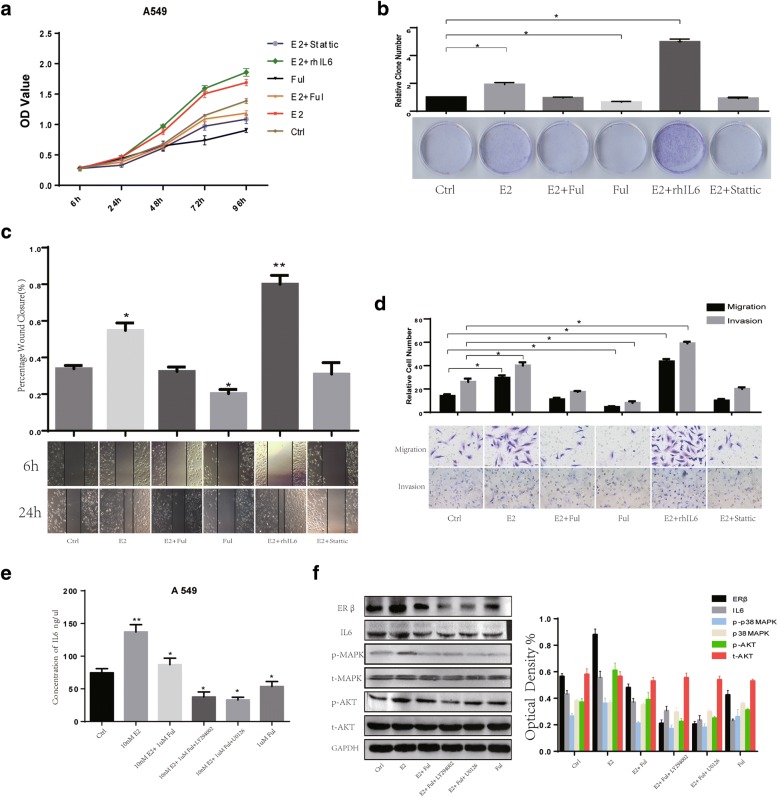Fig. 3.
Upregulation of IL6 stimulated by E2 treatment regulates aggressiveness of NSCLC cells. (a) The cell proliferation of A549 was determined by CCK-8 assay after 72 h concentration-dependent treatment of E2 (10 nM) or Ful (0.1uM) or rhIL6 (0.5 ng/ml) or Stat3 inhibitor static (20uM). The results are representative of three independent experiments. (b) Colony formation assay measuring the proliferative activity in A549 cells after concentration-dependent treatment of E2 (10 nM) or Ful (0.1uM) or rhIL6 (0.5 ng/ml) or Stat3 inhibitor static (20uM). (c) Wound-healing assays were performed to assess NSCLC cell migration. Wound closure was determined 24 h after the scratch. (d) Transwell assay was used to quantify cell migration and invasion capacity. The average number of cells per field of view in three different experiments is plotted. (e-f) ELISA and western blot were used to detect the effect of E2 (10 nM) and its receptor antagonist Ful (0.1uM) on IL6 expression and the influence of MEK inhibitor U0126 (60 nM) or a selective PI3K inhibitor of LY294002 (0.6uM) on E2-mediated IL6 expression through MEK/ERK and PI3K/AKT activation in A549 cells

